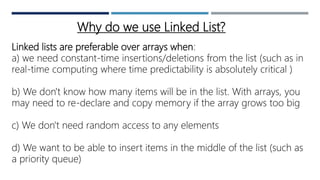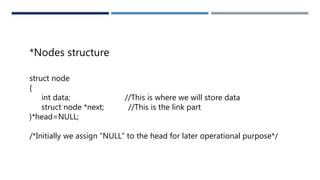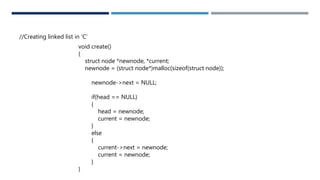Linked lists are linear data structures where each node points to the next. Each node contains a data field and a pointer to the next node. There are three types: singly, doubly, and circular linked lists. Linked lists allow for constant-time insertions and deletions and do not require fixed size allocation. Common operations on linked lists include insertion, deletion, searching, and traversal. Linked lists are useful for implementations like stacks, queues, and dynamic data structures.






































